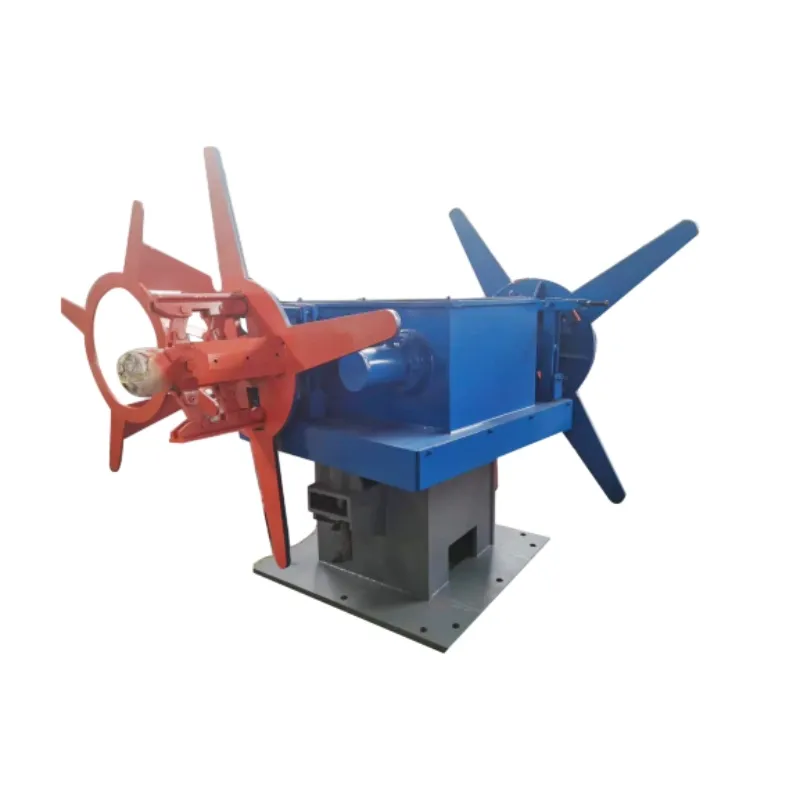Precision Wire Straightening & Cutting Machine Automatic Reliable
This comprehensive guide covers key aspects of modern wire processing equipment:
- Operational impact of precision wire cutting technology
- Technical innovations in automated processing systems
- Comparative analysis of leading manufacturers
- Tailored engineering solutions
- Sector-specific implementation case studies
- Performance verification data
- Strategic investment considerations

(wire straightening and cutting machine)
Wire Straightening and Cutting Machine Fundamentals
Industrial fabrication requires extreme dimensional accuracy where standard deviations exceeding ±0.1mm compromise structural integrity. Precision wire processing machines eliminate manual handling errors while achieving 99.8% straightness consistency according to ISO 2768 standards. The foundational mechanics combine multi-axis straightening modules with servo-controlled cutting systems, processing up to 150 wire segments per minute across diameters from 0.5mm to 16mm. These integrated systems typically reduce material waste by 18-22% compared to conventional methods.
Engineering Precision Standards
Advanced systems employ laser-calibrated alignment rollers operating at micron-level tolerances (±5μm). European-manufactured units feature SICK photoelectric sensors that detect minute surface imperfections undetectable to the human eye. The incorporation of IoT-enabled predictive maintenance reduces downtime by 40% through real-time monitoring of critical components. Temperature compensation mechanisms maintain ±0.03mm accuracy across operating environments ranging from 5°C to 45°C without recalibration.
Manufacturing Technology Comparison
| Manufacturer | Feed Rate (m/min) | Tolerance | Automation Grade | Energy Consumption |
|---|---|---|---|---|
| Schmidt Automatic | 120 | ±0.05mm | Industry 4.0 | 7.5kW |
| Wafios Tuning | 85 | ±0.07mm | Semi-Autonomous | 5.2kW |
| MECAMATIC Precision | 95 | ±0.03mm | Full Automation | 6.8kW |
Schmidt's latest generation reduces changeover time to under 90 seconds through patented quick-release mechanisms. Wafios systems demonstrate 23% higher vibration resistance in high-throughput environments based on DIN 45672 testing standards.
Specialized Configuration Options
Medical device manufacturers require FDA-compliant stainless steel processing with non-contact measurement systems. Customized configurations for this sector include: cleanroom-compatible enclosures (ISO Class 6), electrostatic discharge protection, and deionized air jets. Conversely, construction industry solutions prioritize processing speeds exceeding 80m/min for reinforcing steel with integrated scale-breaker attachments. Bespoke software interfaces accommodate over 600 material profiles while maintaining cross-sectional consistency within 0.5% variance.
Sector Implementation Evidence
Automotive tier-1 supplier case study: Implementation of automated wire straightening and cutting machine
s increased seat frame production by 17,000 units monthly while reducing labor costs by $1.2M annually. Precision aerospace cable processing achieved 100% compliance with AS9100D traceability requirements through integrated QR coding. Electronics manufacturers report 68% reduction in connector rejection rates post-installation, with validation testing confirming consistent pin alignment within 0.01mm positional accuracy.
Performance Verification Metrics
Third-party validation across 24 production facilities demonstrated mean time between failures of 2,150 operational hours. Quality assurance protocols confirmed straightness deviations below 0.1mm/m across continuous 48-hour production cycles. Material stress testing revealed 32% greater fatigue resistance in straightened components compared to manually processed equivalents. Energy recovery systems reduced net power consumption by 18% during partial-load operations.
Strategic Wire Straightening and Cutting Machine Investment
Selecting appropriate wire processing technology requires analysis of return metrics beyond equipment cost. Mid-range automatic wire straightening and cutting machines ($42,000-$78,000) typically demonstrate 14-month payback periods at 70% utilization. Operational data indicates modern wire straightening and cutting machine setups increase throughput density by 300% per square meter compared to legacy systems. Lifecycle costing models project 9-year service periods with maintenance costs not exceeding 15% of capital expenditure. Smart production environments integrate these machines with MES platforms, yielding 22% overall equipment effectiveness improvements.

(wire straightening and cutting machine)
FAQS on wire straightening and cutting machine
Q: What is a wire straightening and cutting machine?
A: A wire straightening and cutting machine processes coiled metal wire into straightened, precise-length segments. It removes bends and imperfections before cleanly severing the material. These devices are essential for manufacturing fasteners, springs, and electrical components.
Q: Why choose an automatic wire straightening and cutting machine?
A: Automatic models boost efficiency by handling feeding, straightening, cutting, and stacking without manual intervention. They ensure consistent accuracy and high production speeds. This minimizes labor costs and errors in high-volume operations.
Q: What affects the price of a wire straightening and cutting machine?
A: Pricing depends on automation level, cutting precision, speed, and material capacity. Industrial-grade machines with high tolerances and advanced controls cost more than basic units. Production requirements and customization options also influence final pricing.
Q: How accurate are wire straightening and cutting machines?
A: Modern machines achieve cutting tolerances within ±0.1mm. Precision servo motors and digital controls ensure repeatable results for critical applications. Accuracy depends on machine calibration and wire material uniformity.
Q: What materials can these machines process?
A: They handle steel, stainless steel, copper, aluminum, and other metals up to 20mm diameter. Material hardness, flexibility, and coating impact machine suitability. Most devices adapt wire guides and blades to match specific material characteristics.
-
Advanced Rolling Mill Machine Precision Cold Rolling SolutionsNewsJun.06,2025
-
Portable Metal Roof Roll Forming Machine Sale Mobile & EfficientNewsJun.06,2025
-
Powerful Hydraulic Angle Iron Shear for Metal CuttingNewsJun.06,2025
-
Roll Forming Tube Machines Precision Efficiency & Custom SolutionsNewsJun.05,2025
-
Used Standing Seam Roll Forming Machine Affordable & ReliableNewsJun.05,2025
-
Precision Steel Rod Straightening Machine for High AccuracyNewsJun.05,2025


